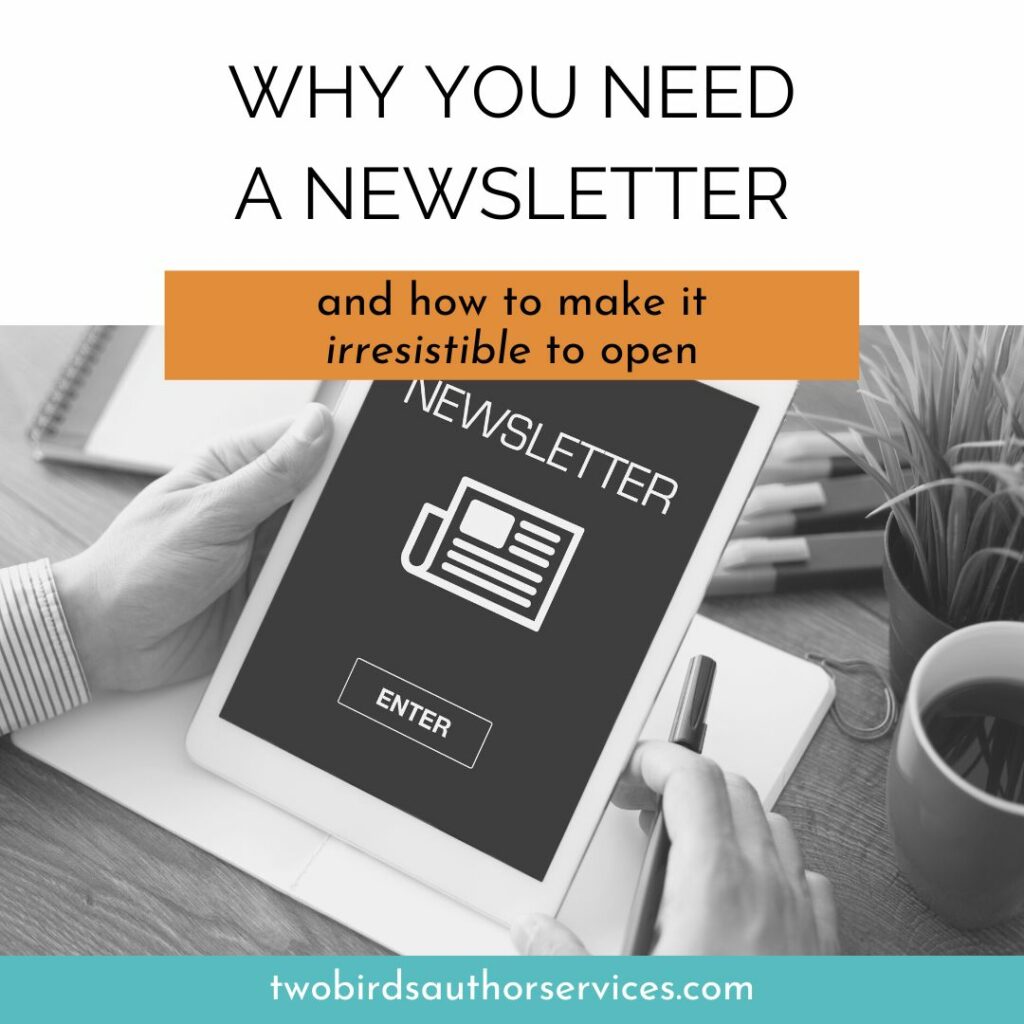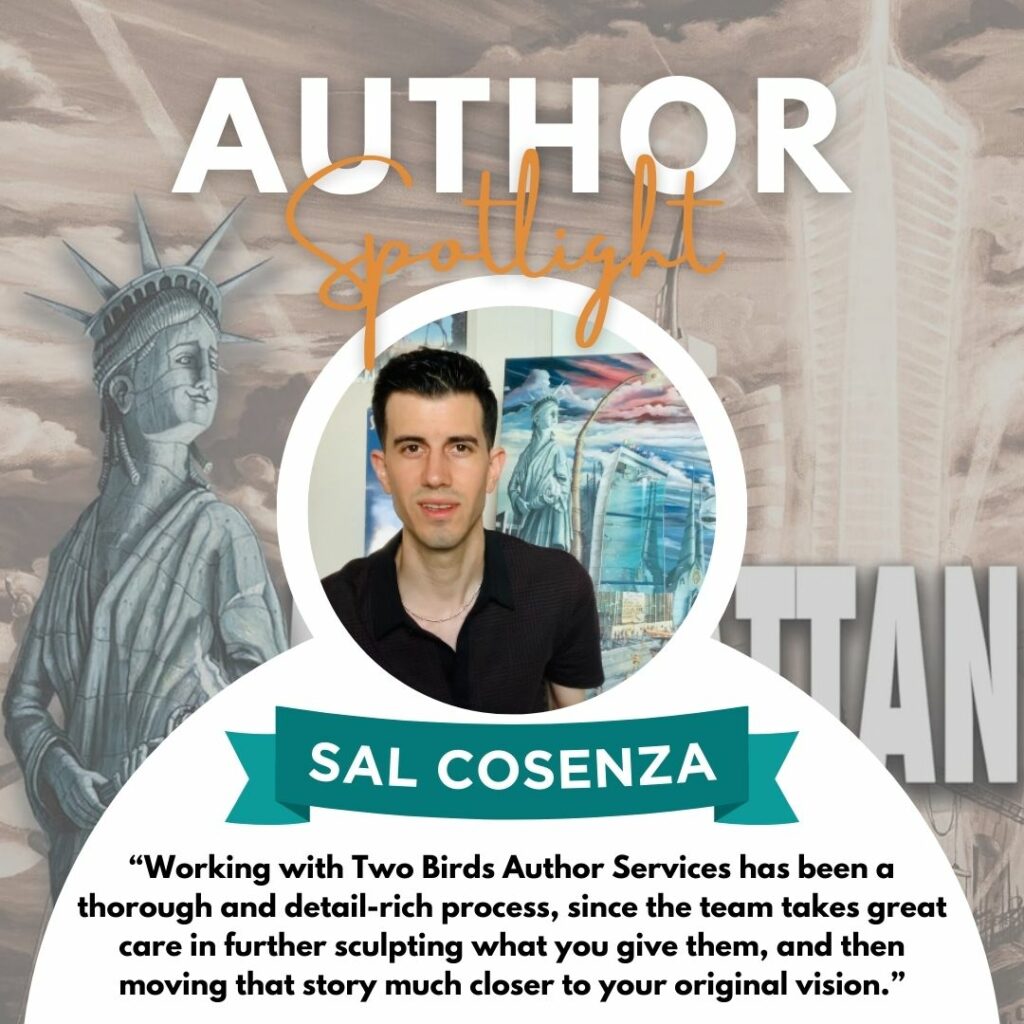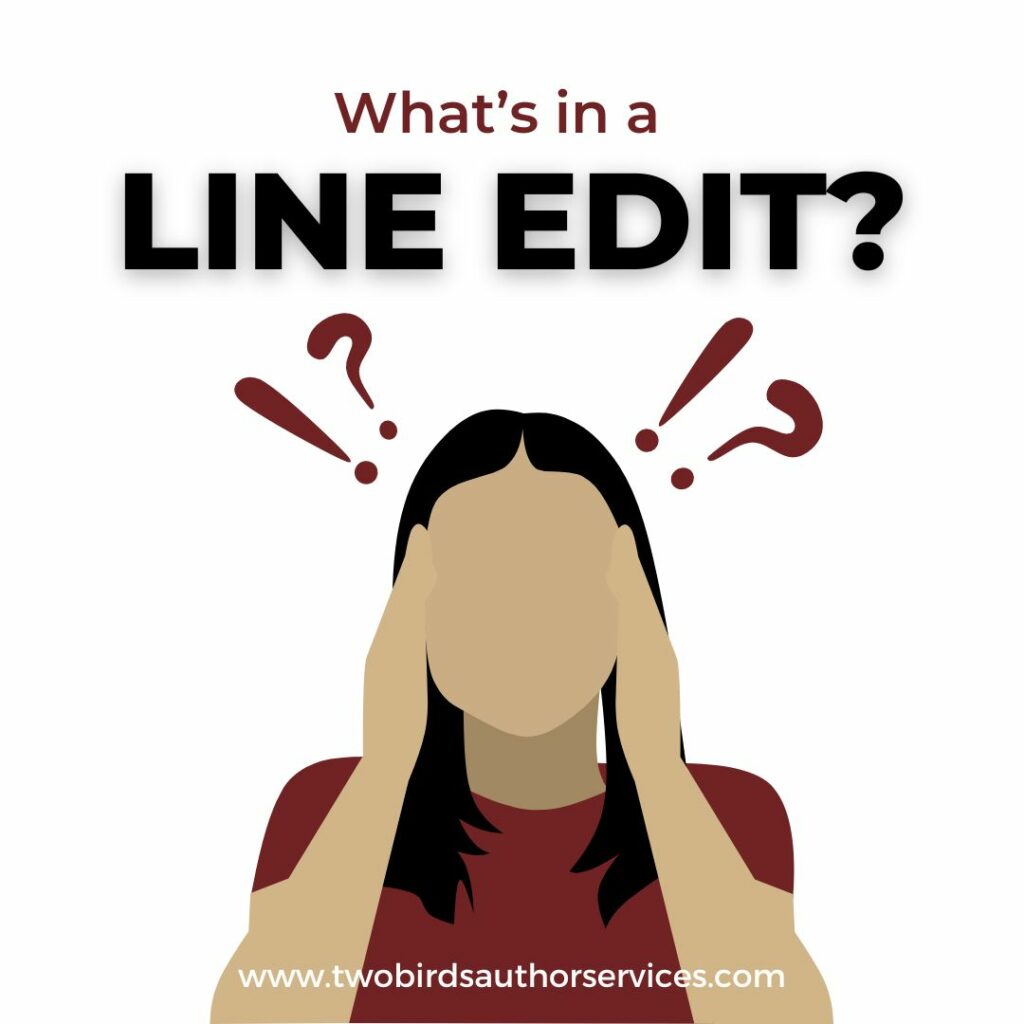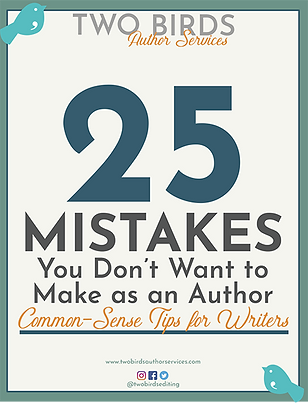AND HOW TO MAKE IT IRRESISTIBLE TO OPEN
Yes, you need a newsletter
Whether you’re a new author, an aspiring author, or an established one, it’s never too early—or late—to start a newsletter. Having a mailing list is a key ingredient to your success, and its power shouldn’t be underestimated! In this blog post, we’re going to give you a few key reasons why you need your newsletter, plus some tips on how to keep your readers coming back for more.
We’re not going to sugar-coat this—starting, growing, and maintaining a newsletter is hard work. There are many things to keep in mind from the very beginning if you really want to set yourself up for success. We’ll dive into some of those other aspects of “newslettering” in future posts, but for now we’re going to look at a few reasons why you want to get yours started right away.
Think you don’t need to read this article? Think again
You might be thinking, hey, I already have a mailing list so I don’t need to read this. If that’s you, STOP! Keep reading. First off, good for you for having your list already going! But do you have healthy newslettering habits? In just a moment, we’ll discuss some dos and don’ts when it comes to content.
Here’s why you need a mailing list
Just about every author, regardless of where they are in their career, relies on physical bookstores or ecommerce platforms to sell their books—and make money. Whether your local indie bookshop sells your debut like hotcakes, or you’re trying to break the top 100 on Amazon, your book is being sold … by someone else.
And guess what? They are the ones who have access to your customer information. Sites like B&N, Kobo, and Apple sell your book, and keep the information about your reader. They’ve got your reader’s credit card number, reading preferences, and email address.
What do you have? A small royalty. That’s it.
If you want to notify your reader that your second (and third, fourth, fifth … You get the idea) book is coming out, what can you do? Either cross your fingers that Amazon will be nice enough to recommend it to readers, or pay them money to advertise it. And after all that, you still won’t have your reader’s information.
The same goes for social media. You may have 10k Insta or Twitter followers (and be on that infernal BookTok thingie). In which case—bravo! Sure, you can create a shop on some of these platforms, or link to your own website. But what would happen if TikTok closed up shop tomorrow? You guessed it—you’d have no way of contacting all those followers.
Plain and simple, the only way you can directly talk to, market to, or truly interact with your readers without an intermediary is if you have their email addresses. A mailing list.
There are many ways to start and grow that list, and a million people out there who are happy to take your money to tell you how to do it. Some of those programs are better than others, and at some point soon we’ll point you in the direction of some good ones. But for now, do some research, find one (up-to-date) book to start with, and begin researching how to get your list up and running.
I have my mailing list. Now what?
Your list won’t do you any good unless you find ways to engage with your readers. That means creating a newsletter. This is a no-brainer, right? Yup. But that doesn’t mean it’s easy. Creating meaningful, respectful, and consistent content can be challenging! Let’s go over a few basic guidelines to follow when writing your newsletter.
What to do when writing your newsletter
We’ll keep it simple and focus on two areas to consider when writing your newsletter.
1. Keep things consistent
Make sure you are consistent in:
- Mailing frequency: Decide how often you want to email your list and stick to it. A schedule works best, and once you set that in motion, your readers will know when they’ll be hearing from you—and hopefully will be looking forward to something from you in their inbox.
- Tone: The tone of your emails doesn’t have to exactly match the genre you write in, but coming close may be to your benefit. For example, if you write sweet romance, perhaps it would be best not to drop a bunch of F-bombs in your newsletter! Also, keeping the tone consistent across all your emails will help you find your real readers—the people who love what you have to say and how you write. Again, as an example, if you never write much about your personal life but then in one email tell everyone about your messy divorce, it might come as a bit of a shock to your readers … and turn them off your writing.
Which leads to the other topic…
2. Be personal, but not too personal (unless that’s your thing!)
How much do your readers want to know about you? Sharing things like photos of your pets or kids is one thing, but telling them about that procedure you had done last week is another. Some authors do have that kind of relationship with their readers, which is fine. But you don’t have to. And as mentioned, as long as you stay consistent with how much you share, your readers will grow to know what to expect of you.
Why is that important? Because all this will help you define your audience, which in turn will help you in your marketing and promotion, and even your writing (if you want it to).
What NOT to do when writing your newsletter
This is pretty basic stuff, but so very important to keep in mind as you go.
1. Don’t create a repeatable, consistent format and tone
Regarding consistency, it’s (most of the time) a smart idea to not throw a bunch of, um, stuff, against the wall and see what sticks. Sure, there are exceptions to all of these rules, and maybe you do end up tossing some stuff against the wall at the beginning, but if you can find a format, tone, and basic framework for your subject matter, you’ll be in much better shape.
2. Don’t treat your readers as “wallets with legs”
That phrase is, as far as I know, attributed to Tammi Labrecque, the super-famous Newsletter Ninja. Even though most writers want to make a profit with their books, the last thing you want to do is think of yourself as a credit card reader and your readers as AMEXes. Not only will making your emails full of sales pitches make your correspondence come across as spammy, it’s also not providing your readers with any meaningful content. Which results in no meaningful connection. When your readers find value in your emails, then they’ll be much more likely to hit “buy” when you do have something to sell them.
3. Don’t stuff your newsletter with CTAs
As we just mentioned, try not to come across as too “salesy” to your readers. How much is too much? That’s up to you. Many authors regularly participate in “swaps” of various kinds, all of which will add calls-to-action to your emails. We’d suggest not doing too many of these at once, unless that’s your thing. This way, you can keep the focus, or main call-to-action on your own books.
What’s the next step?
You may have noticed what might sound like a few contradictions in this article, and that’s because there are a lot of grey areas when it comes to marketing your books and building your readership. If you want to build your brand on sharing a whole bunch of personal information about yourself, or making a newsletter filled with author swaps, then you do you! But for most writers, the guidelines discussed here are good things to keep in mind when getting started on the newsletter journey.
Need some additional help getting started? Reach out to us with any questions you may have. We’re available for consulting! And if we don’t know the answer to your burning questions, we’ll find someone who does.
Sign up to receive our monthly newsletter, full of more helpful info and the occasional special deal!




